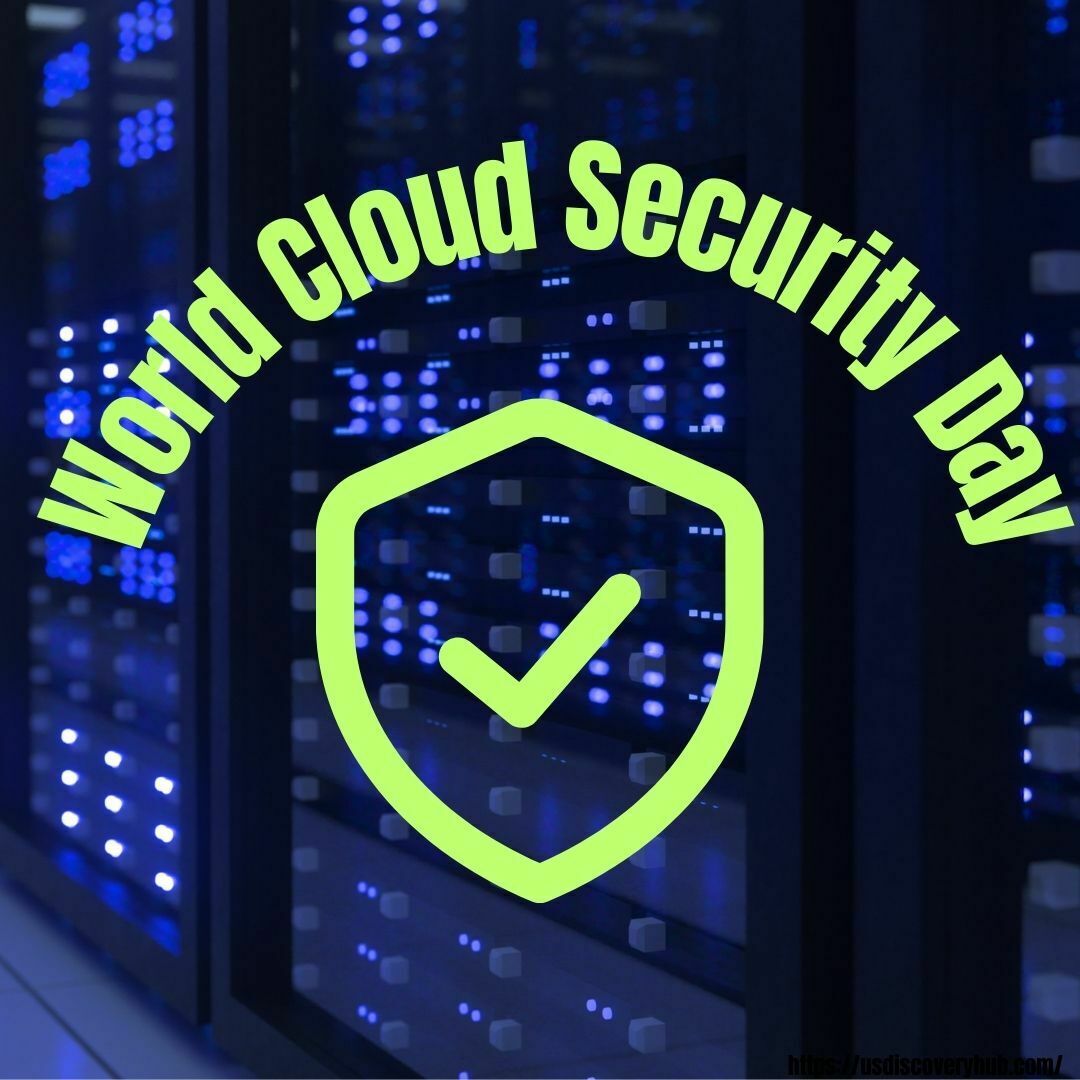World Cloud Security Day is a global event held annually on March 30th to raise awareness about the importance of cloud security and to promote best practices for securing data in the cloud. The event is organized by the Cloud Security Alliance (CSA), a non-profit organization that aims to promote best practices for secure cloud computing.
The main objective of World Cloud Security Day is to bring together cloud security experts, industry leaders, and technology providers to share insights and best practices for securing cloud environments. The event provides a platform for discussions on emerging threats, new security technologies, and best practices for securing cloud environments.
During World Cloud Security Day, various events are organized, including conferences, webinars, and workshops, to raise awareness about the importance of cloud security. The events cover various topics such as cloud security challenges, emerging threats, data protection, compliance, and governance.
The Cloud Security Alliance also provides resources and tools to help organizations improve their cloud security posture. These resources include security guidance documents, security frameworks, and certification programs for cloud service providers.
Overall, World Cloud Security Day plays a crucial role in promoting best practices for secure cloud computing and raising awareness about the importance of cloud security in today’s digital landscape.
here are some additional details on World Cloud Security Day:
- The first World Cloud Security Day was celebrated on March 30, 2021, and it was a virtual event due to the COVID-19 pandemic.
- The Cloud Security Alliance (CSA) has been organizing various events and initiatives to promote cloud security since its inception in 2008. World Cloud Security Day is one of its latest initiatives.
- The CSA has identified several key areas of focus for cloud security, including governance, risk management, compliance, data protection, threat management, and incident response.
- The events organized on World Cloud Security Day feature presentations and discussions by industry experts, security practitioners, and technology providers. These events provide insights into emerging threats and best practices for addressing them, as well as opportunities for networking and collaboration.
- In addition to events, the CSA also provides research and education on cloud security topics. It has published numerous reports, whitepapers, and best practices guides on various aspects of cloud security.
- World Cloud Security Day is an opportunity for organizations to evaluate their cloud security posture and take steps to improve it. By adopting best practices and leveraging the resources provided by the CSA, organizations can strengthen their cloud security and protect their data from cyber threats.
- The increasing adoption of cloud computing has made cloud security a critical concern for organizations of all sizes and industries. World Cloud Security Day serves as a reminder of the importance of cloud security and the need for continuous improvement and vigilance in this area.
- The cloud computing market is expected to reach over $1 trillion by 2025, and with this growth comes an increased risk of cyber threats. World Cloud Security Day aims to promote awareness of these risks and encourage organizations to take proactive steps to protect their data in the cloud.
- The events organized on World Cloud Security Day typically include keynote presentations, panel discussions, and workshops. They cover a wide range of topics, from cloud security basics to advanced threat detection techniques.
- One of the key challenges in cloud security is the shared responsibility model, where cloud service providers are responsible for securing the underlying infrastructure, while customers are responsible for securing their own data and applications. World Cloud Security Day emphasizes the need for collaboration between service providers and customers to ensure comprehensive security across the entire cloud ecosystem.
- The CSA provides several certification programs for cloud service providers, including the Cloud Security Alliance Security, Trust & Assurance Registry (STAR) program, which assesses the security posture of cloud providers against a set of industry-recognized best practices.
- World Cloud Security Day also highlights the importance of compliance with industry and regulatory standards. The CSA provides guidance on compliance with standards such as the General Data Protection Regulation (GDPR) and the Health Insurance Portability and Accountability Act (HIPAA) to help organizations meet their legal obligations.
- Cloud security is an evolving field, with new threats and technologies emerging regularly. World Cloud Security Day encourages ongoing education and training to keep up with these developments and maintain a strong security posture.
- Finally, World Cloud Security Day is an opportunity for organizations to showcase their commitment to cloud security and build trust with their customers. By participating in events and promoting best practices, organizations can demonstrate their dedication to protecting customer data in the cloud.
What is cloud security according to the five pillars?
loud security according to the five pillars refers to a framework developed by the Cloud Security Alliance (CSA) that provides a holistic approach to securing data in the cloud. The five pillars are:
- Governance: This pillar focuses on establishing policies, procedures, and controls to ensure that the cloud environment is secure and compliant with regulatory requirements. It includes activities such as risk management, security audits, and security awareness training.
- Compliance: This pillar focuses on ensuring that the cloud environment is compliant with legal, regulatory, and contractual requirements. It includes activities such as data protection, access control, and incident response planning.
- Data Protection: This pillar focuses on protecting data in the cloud from unauthorized access, use, disclosure, or destruction. It includes activities such as encryption, data classification, and data backup and recovery.
- Infrastructure Protection: This pillar focuses on securing the underlying cloud infrastructure, including hardware, software, and network resources. It includes activities such as network security, server hardening, and patch management.
- Identity and Access Management (IAM): This pillar focuses on ensuring that only authorized users and devices have access to the cloud environment. It includes activities such as multi-factor authentication, user provisioning, and access control policies.
By addressing each of these pillars, organizations can implement a comprehensive approach to securing data in the cloud. The five pillars framework can help organizations identify and address potential security gaps in their cloud environment and ensure that their data is protected from cyber threats.
What are the four areas of cloud security?
Cloud security can be broadly categorized into four main areas:
- Data Security: This area focuses on protecting data stored in the cloud. It includes ensuring data confidentiality, integrity, and availability through encryption, access controls, and backup and recovery mechanisms.
- Application Security: This area focuses on securing applications deployed in the cloud, including web applications and APIs. It includes measures such as code reviews, vulnerability assessments, and security testing to prevent and detect security vulnerabilities in applications.
- Infrastructure Security: This area focuses on securing the underlying cloud infrastructure, including servers, networks, and storage. It includes measures such as network security, endpoint protection, and monitoring to prevent and detect unauthorized access or malicious activity.
- Compliance and Governance: This area focuses on ensuring that cloud-based services comply with regulatory and industry standards. It includes measures such as data privacy, access controls, and risk assessments to maintain compliance and governance frameworks.
These four areas of cloud security are interrelated and depend on each other to provide a comprehensive security posture for cloud-based services. Organizations need to address each of these areas to ensure that their cloud environment is secure and meets regulatory and industry standards.
Which type cloud has highest security?
There is no one “most secure” type of cloud deployment, as security depends on multiple factors including the type of data being stored, the security measures in place, and the specific needs and requirements of the organization. However, each type of cloud deployment has its own unique security considerations.
Private cloud deployments, where the infrastructure is dedicated to a single organization and managed by that organization, may be considered more secure because they offer greater control and customization over security measures. However, this also means that the organization is responsible for managing and maintaining the security of the infrastructure, which can be resource-intensive and require specialized expertise.
Public cloud deployments, where the infrastructure is shared among multiple customers and managed by a cloud service provider, may also be considered secure if the provider has robust security measures in place, such as encryption, access controls, and regular security assessments. However, the organization needs to ensure that they have a clear understanding of the security measures in place and their responsibilities for securing their data in the cloud.
Hybrid cloud deployments, which combine both private and public cloud components, can offer the benefits of both while mitigating the potential security risks. For example, sensitive data can be stored in a private cloud while less sensitive data can be stored in a public cloud.
Ultimately, the security of a cloud deployment depends on the specific needs and requirements of the organization, and careful consideration should be given to selecting the appropriate type of cloud deployment and implementing robust security measures to protect data in the cloud.
World Cloud Security Day Images
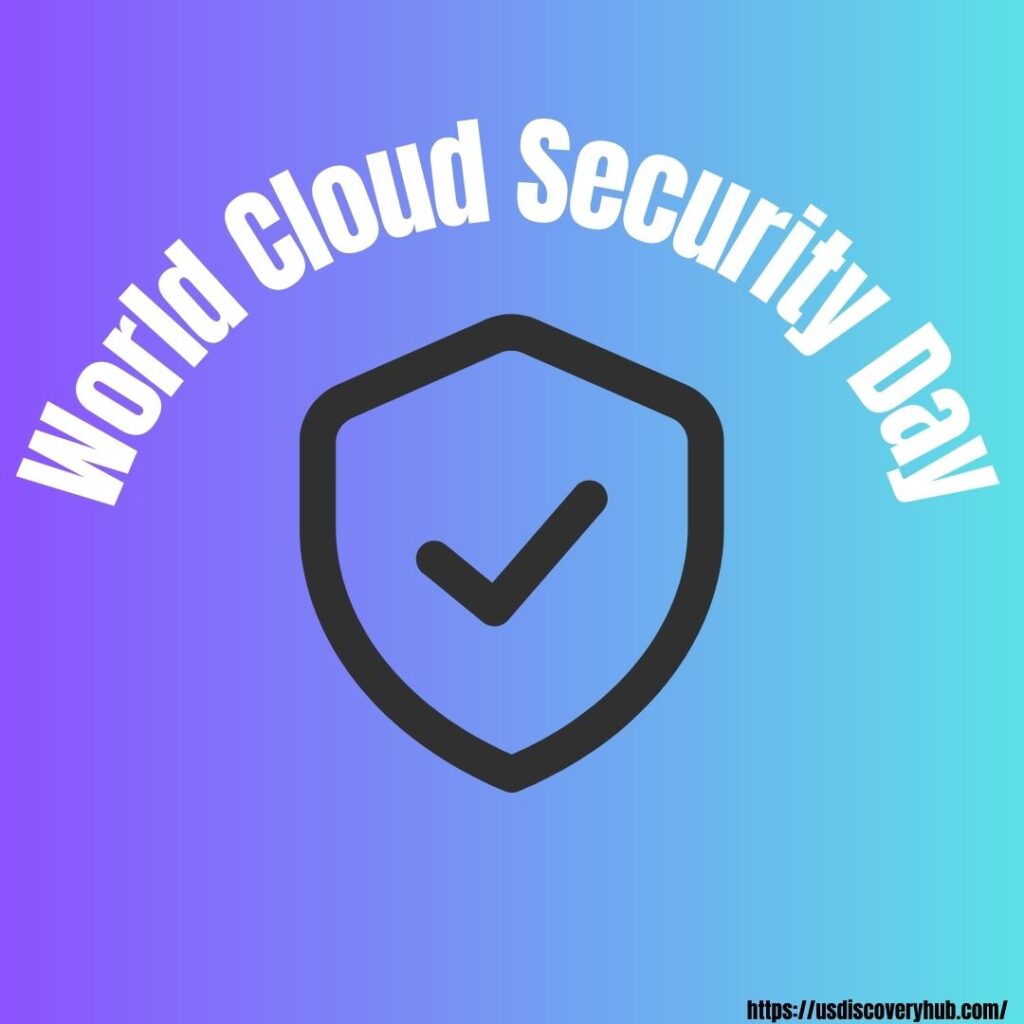
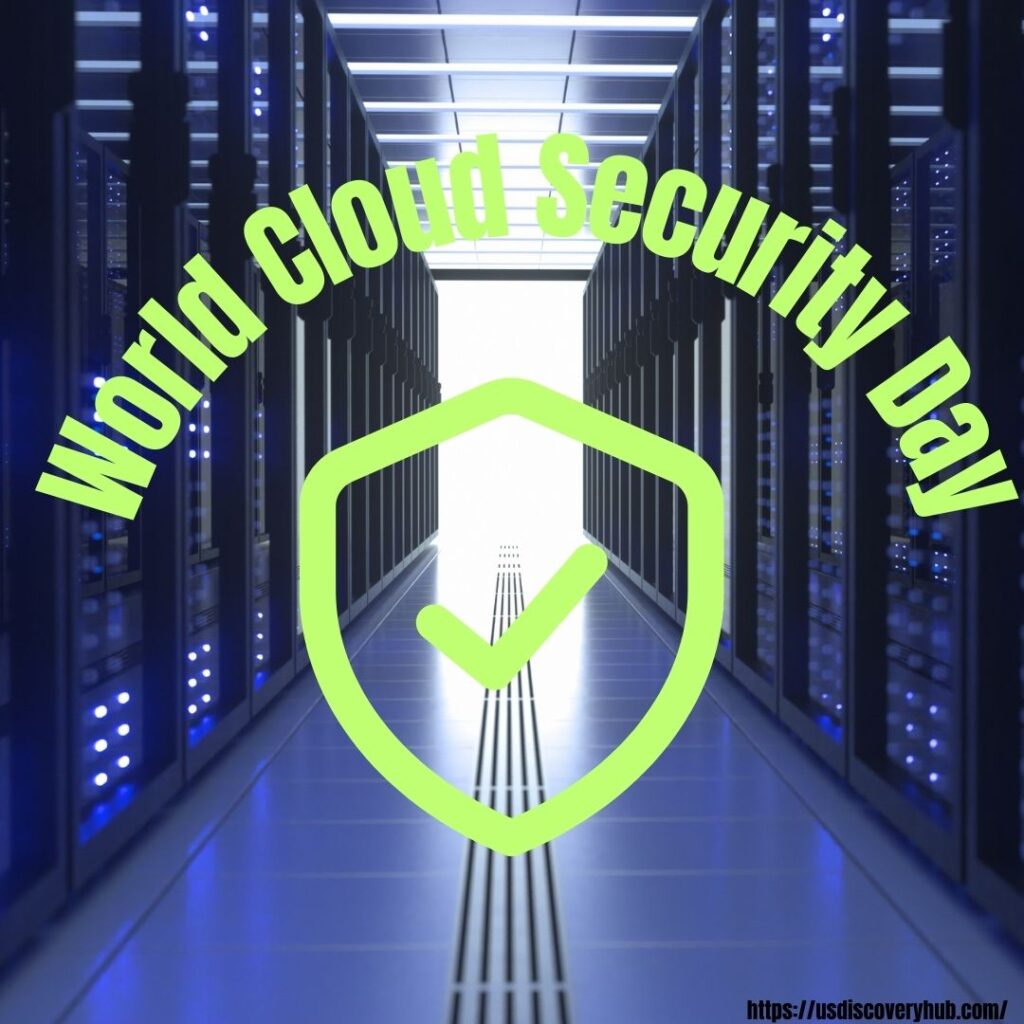
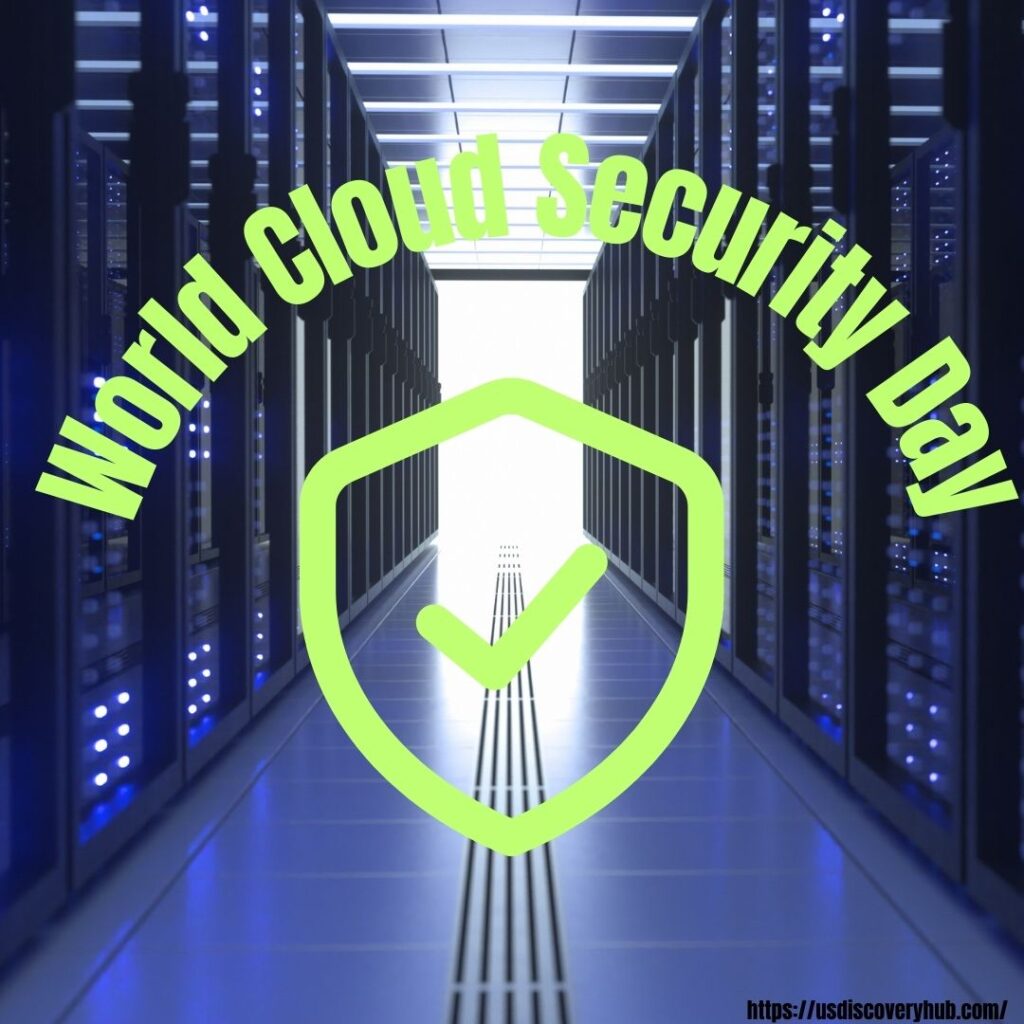
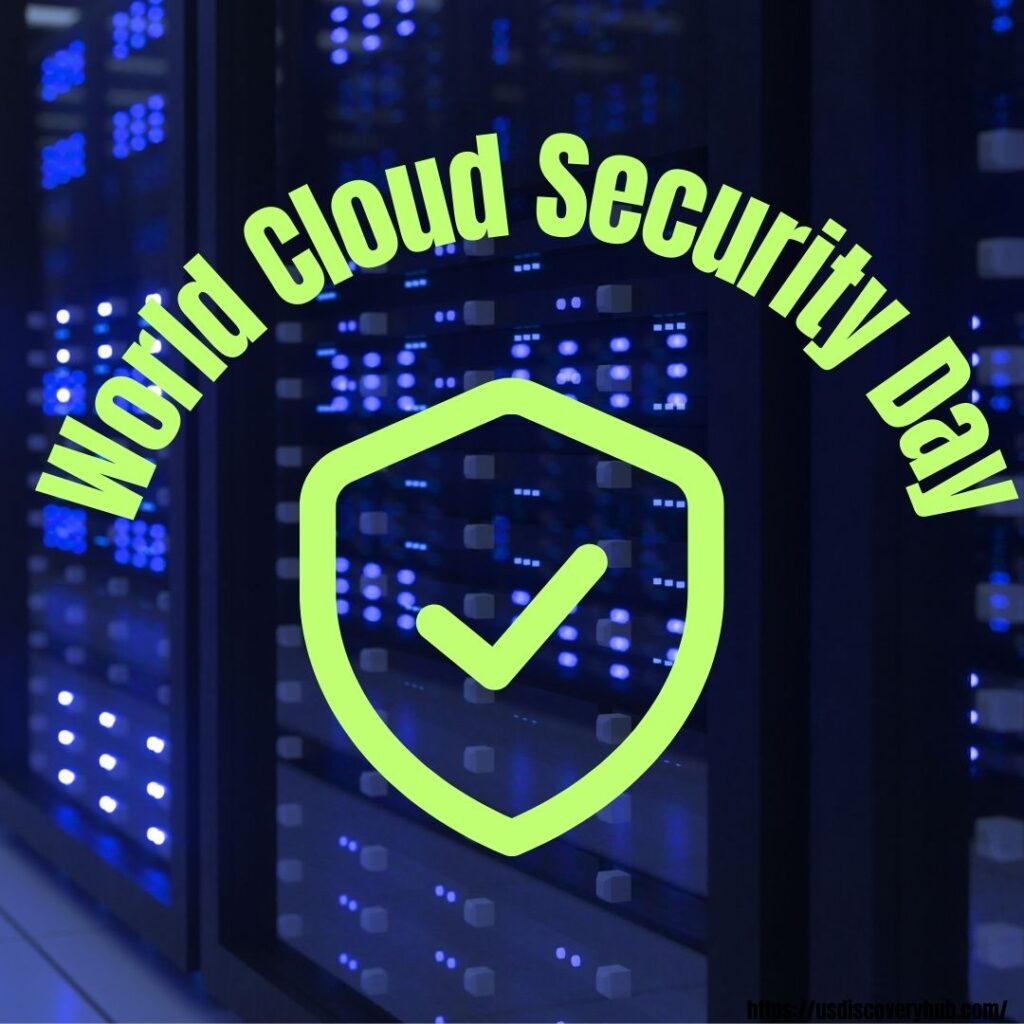
FAQ
What is cloud security?
Cloud security refers to the set of policies, technologies, and practices designed to protect data, applications, and infrastructure in the cloud from cyber threats. It involves ensuring confidentiality, integrity, and availability of data and services hosted in the cloud.
Why is cloud security important?
With the increasing adoption of cloud computing, organizations are moving their critical applications and data to the cloud. This makes cloud security critical for protecting sensitive data, maintaining compliance with regulations, and preventing cyber attacks.
What is the Cloud Security Alliance (CSA)?
The Cloud Security Alliance is a non-profit organization dedicated to promoting best practices for secure cloud computing. It provides education, research, and certification programs for cloud service providers to improve their security posture and promote trust in the cloud ecosystem.
What is World Cloud Security Day?
World Cloud Security Day is a global event organized by the CSA to raise awareness about cloud security and promote best practices for securing data in the cloud. The event is held annually on March 30th and features various events, including conferences, webinars, and workshops.
Who should attend World Cloud Security Day events?
World Cloud Security Day events are designed for cloud security professionals, IT managers, executives, and anyone interested in cloud security. They provide an opportunity to learn about emerging threats, best practices, and new technologies for securing data in the cloud.
How can organizations improve their cloud security posture?
Organizations can improve their cloud security posture by adopting best practices such as encryption, multi-factor authentication, and regular security assessments. They can also leverage the resources provided by the CSA, such as security frameworks, guidance documents, and certification programs for cloud service providers.
What are some common cloud security challenges?
Common cloud security challenges include data breaches, misconfigurations, insider threats, compliance issues, and third-party risks. These challenges can be addressed through proper security controls, regular risk assessments, and ongoing education and training for employees.
Others Links
History of United States Of America
United States History Timeline
What are 10 historical facts about the United States?
